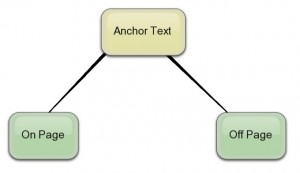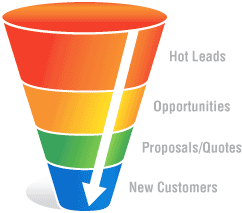Are you ready to gain a deeper understanding of SEO definitions and maximize the impact of your marketing efforts? It is essential for any startup business, entrepreneur, or founder to have knowledge about this field in order to ensure that their website is optimized correctly.
No, no… don’t be surprised that we’re back with more acronyms, synonyms, the latest buzz words and all around SEO definitions. It’s called the Wild Wild World of Search, so how could we not?
Have you noticed what’s been going on for the past three months? It seems marketing has finally caught up with SEO… or maybe it’s the other way around. Either way, we’re here for the long awaited update on the SEO dictionary. It’s not just about SEO; you know those irritating marketing buzz words that seem to be creeping into our daily language? Yeah, some of those are in here, too.
301 Redirect
Used mostly when old pages are replaced by new ones, the 301 redirect is a “permanent” move. Think of it like the post office. When you move from one address to another, you give them your new address. Why? So they automatically send the mail to your new address.
A 301 works much like the post office, only for traffic. If you delete/move/rename a web page without using a 301, you’ll lose all the links, PageRank, traffic and other good stuff you’ve built for that page. By adding a 301 redirect, all that good stuff is “redirected” to the new page. Only, unlike the post office, the traffic doesn’t get lost in transit.
404 Error
You’re surfing the web and you come across a page that says, “Oops! The page you’re trying to reach isn’t here” or something like that? This is the irritatingly familiar 404 error page. Ironically, a lot of 404’s happen because people didn’t use a 301 redirect. 404 simply means “page not found”.
Hint: you don’t want a lot of these. You can always find a list in Google Webmaster Tools. You can either create a custom 404 page that helps your visitors find related information or create 301s and send them to the new pages.
Above the fold
Marketers, copywriters, SEOs, etc, often talk about putting the most important information above the fold. “Above the fold” is the area of your page immediately visible to visitors before they ever start scrolling down a page.
Unfortunately, where the fold is depends on the viewer’s browser size. Therefore, a viewer with a 640 X 480 browser size has a higher “fold” than one with a 1024 x 768. By visiting Google Browser Labs and inputting your URL, you can get a good idea of what’s visible to your viewers.
Absolute Link
An “absolute link” is a link with a complete URL. Example:
<a href=”https://level343.com/article_archive/”></a>
This link will reach your website from anywhere on the Web, no matter where it’s placed.
Alt Attribute
The “alt” attribute stands for “alternate”. This alternate text shows in lieu of images, when images aren’t visible to the visitor. It is added in the HTML code:
<img alt=”your alternative text here” src=”yoursourcefile.jpg” />
It’s important, when using the alt attribute, to remember that it is also used by screen readers when a visually impaired visitor is looking at your site. Therefore, it’s not meant to describe the picture itself, “purple flower with green grass and blue sky”, but the image’s purpose for being there: “Flowers brighten the day”. These attributes should never be used as a place for stuffing keywords.
Anchor Text
Anchor text is, for lack of a better description, the text that “anchors” a link to the page.

Example:
<a href=”example.com”>Click here</a>
The “Click here” in the example is the anchor text. For SEO, usability and general, all around usage, anchor text should describe the page being linked to, not the page the link is on.
Backlink
A backlink is also called an inbound link or an IBL. In Bound Links are links coming from sites other than your own. For example, when you write a guest blog and your bio links back to your site, this is considered an IBL. Their site page >>> your site page.
Conversions
If you’ve had any marketing experience, you already know what a conversion is. However, for SEO, it can get a bit tangled. Most people think a conversion means a sale. On the Internet, defining what you would consider a conversion all depends on what you want to get out of a particular page.
For example, if your visitor goes from a product page to checkout and completes the buying process, it’s a conversion. It’s also a conversion if you have an informational page or blog and someone signs up for your blog feed, though. Simply put, if the visitor does what you want them to do, they’ve converted.
CTA
A CTA is a Call to Action. These buttons or links say “Buy Now”, “Contact us today”, “Have you signed up for our newsletter” and so on. CTAs are essential for the success of a business website. They tell the visitor what you want them to do, and the visitor doesn’t have to guess.
Dynamic Websites
These dynamic websites usually end with extensions like PHP, ASP and JSP. They allow the content to change as a user refreshes the page. Examples of dynamic websites are those that might show revolving banners, changing testimonials, etc. Other examples include sites built on WordPress, Joomla and Drupal platforms, or many eCommerce sites with rotating products.
Unlike static sites, dynamic sites separate the design from the content. In this way, even individuals with no design experience can change the content without messing up the design.

Goal Funnel
Whether you use Google Analytics, SiteCatalyst, ClickTale or no analytics at all, having a visual representation of your goal funnel helps you find places where you lose the sale. Often, it turns out the steps you thought your visitors would take aren’t the ones they actually took (see Real Paths to Conversion Infographic).
IBL
In Bound Links, or IBLs, are links coming from sites other than your own. See backlinks.
(Editors Note: Added Jan 2011)
Jaamit Link
This is a new term; we don’t know if it will stick, but we hope it does. We’ve added “jaamit”, created as a memorial to a wonderful person in the industry. A jaamit is a very strong link, one that even outlasts the link builder. Read the link to the article for more information, a touching story and a hard lesson about link building. RIP Jaamit Durrani
Keywords
Keywords and key terms are the word(s) you use to search for something on a search engine. For SEO and your business, they’re terms you think your target market will search for. Miami golf shoes, as one of our favorite examples. If you sell them, you might expect people to search for them. Therefore, you want to make sure your site shows up in the top SERPs for this key term.
Landing Pages
Okay, this here’s a deep subject to get into, because there are two types of landing pages. The first is called a sales page. You click on an ad and land on a page completely dedicated to the purpose of the ad. It’s probably four scrolls long and has ample opportunity for you to buy, subscribe or sign up.
The second type is any page on your website. In the purest since of the word, a “landing” page is simply the page of a site you land on after clicking a link. However, when an SEO or copywriter says “landing page”, they generally mean the first type, or sales page.
Link Bait
Link bait is any article, image, video or other piece of content that attracts attention and links. Examples of link bait include:
- Controversial or ranting posts
- Web and/or mobile apps
- Widgets
- Infographics
Oh, and let’s not leave out high quality articles themselves. A strongly written article can go a long way towards attracting attention, links and authority-building goodies.
OBL
Out Bound Links, or OBLs, are links on your site pointing to another site. For example, we have several OBLs in our footer under “More Reading”.
Off Page Optimization
Some SEO techniques include things that don’t directly affect your website. Link building is an excellent example. With link building, the optimizer gets other sites to link to yours. It doesn’t actively change anything about your website except (if done right) the SERP rankings.
Plenty of terms exist in the SEO world, and more are constantly being added. As well, you might have someone using a term you don’t recognize only to find it means something you’re extremely familiar with. When you’re talking with an optimizer or someone in a related industry, don’t be afraid to ask for an explanation of terms you don’t understand. Knowing is half the battle!
On Page Optimization
SEO is optimizing for the search engines: making sure your site is relevant to your chosen key terms. Several techniques go into this process. The techniques used specifically on the site itself, such as how the content is written, what terms are used, what the code looks like and how images are named are just a few examples of on page optimization.
ORM
Online Reputation Management is the practice of understanding, influencing and managing an individual’s or a business’s reputation. Depending on their ORM various approaches, and campaigns are created to handle each issue.
Organic Search Results
In the SERPs, you have paid advertisements and organic results. Site optimization targets organic search results, which are shown directly under the paid advertisements. You want to rank high in organic – or natural – search results for your targeted keywords; studies show a much higher percentage of clicks for sites in the #1 placement.
PageRank
Otherwise known as PR in Googleeze, PageRank is a nifty little algorithm. Learn it, understand it, and then forget about it. Does it matter? Sure – it’s one of the ways Google decides where it will rank your site for key terms. As well, a site with a high PR has more weight to it when it decides to link to yours.
However, few (if any) know exactly what it takes to move up the scale between 0 – 10 of PageRank. People may talk about a high number of links or other factors, but the truth is, they don’t really know. For Google, PR is one of 199 + other factors that determine key term rankings.
If you turn PageRank into something you obsess on, it can become a full time occupation. Since you don’t know what it’ll take to move from 2 to 3, etc, you could be obsessing for a long time. Don’t worry about; if you go up the ranks, simply accept it as a pat on the back and move on.
You can read an excellent in depth article about PageRank @ WebWorkshop: PageRank Explained
PLP
PLP stands for Preferred Landing Pages. Every page is a landing page, but PLPs are the pages of your site you really want your visitors to see. Read more on this topic at Search Engine Journal: The Art of the Landing Page.
Relative Links
A relative link can only be reached from within your website. Example:
<a href=”/article_archive/>”></a>
Although WordPress automagically adds the rest of the URL, this doesn’t happen with HTML, ASP and others. On these types of sites, if you copied a URL and pasted it in a browser, the above relative link is all you would see.
Many use relative rather than absolute links. The problems with relative links include:
- If someone copy/pastes a relative link into their own blog while discussing one of your posts, it can cause a 404 error. They’ll end up with a URL that looks like this: theirsite.com/your-relative-url-link/. They get a 404 and you get no traffic.
- Relative links can also create duplicate content issues. If you haven’t properly set up your site to manage the non-www and www versions of your site, you could end up with both versions being indexed thanks to those persnickety relative URLS.
- Relative URLS make it easy for website scrapers to… well, scrape. All they have to do is snag your pages – the links remain all nice and pretty for their own servers.
SERPs
(S)earch (E)ngine (R)esults (P)age(s) – When you open up Google and put in a search term, the resulting pages are the SERPs. When SEO’s talk about raising in the rankings, they’re talking about the SERPs. What do you need to know about this term? That you want to be at the top of them for your chosen key term.
Spiders
A lot of terms go along with “spiders”. For example, search engine spiders are said to “crawl” the web. Spiders are also known as “web robots”, “robots”, “web crawlers”, Internet bots” or just “bots”. Spiders are simply programs made to search the web; in the case of search engine spiders, they do so for indexing purposes.
Not all bots are “good”. Some are used for spamming purposes. Called “spambots”, they gather email addresses, hunt through forums for places to submit poor content, etc. Some spambots simply post messages with a lot of links, meant to increase a site’s search engine ranking.
Static Websites
A “traditional” website is usually a “static” website, and has a URL that ends with HTML. Static websites usually have a set amount of pages with a finite amount of information. Content changes are done by professionals, with the new page uploaded to the server.
Each page of a static site has all the information on it that it needs to be displayed in your browser. What your browser sees in the code on that single page is what you get.
UGC
User Generated Content, or UGC, is just what it sounds like: content generated by the user. Examples of UGC include Twitter, Facebook and YouTube. Threadless is also an excellent example (and darn good business sense, too). Comments on your blog, guest posts and so on… in other words, if your visitors provided them, they’re UGC.
URL
AKA Uniform Resource Locator, a URL is an Internet address. Examples: http://mycompany.com, http://www.yourcompany.com/blog/blog-title, http://mywebsite.net/introduction.html
What SEO terms would you add to the list? If you have suggestions, let us know in the comments!




































12 Responses
I’m currently reading your all your post and between that and this post, I’m finding jumping back into blogging to be very easy. I love your tips and how friendly you are!
Jomer, I bet you say that to all the ladies. Thank you very much, you’ve put a huge smile on my face! Besides that’s the one thing I’ve always taken pride in, being friendly. It always makes my day easier.
It took me like 2 months to fix the 404 Errors and I was like having a hard time. And since I know how to fix it now, I will learn other SEO related task.
There are really lots of SEO terminology that needs to be learn. I got difficulty learning all of these and it took me long time to really understand it.
I hope this list helps… we will continue to update as needed.
Great info regarding SEO definitions or terminologies. This will come in handy for those specially who are new to internet marketing or SEO.
I have to add this to our list… http://01100111011001010110010101101011.co.uk/2012/05/building-an-alternative-seo-glossary/ –
I thought landing page is the home page. Thanks for clearing that up. Anyways, I’ve been reading a lot of articles lately and i always encounter the word ROI. I search it in Google apparently there’s a lot of definition with that abbreviation. I would appreciate if you could explain it to me Gabriella. Thank you very much.
Static Websites . . . “content changes are done by professionals . . .” seems to imply if you’re creating Dynamic Websites, you’re an amateur.
Sort of slaps all of the .asp and .php programmers in the face, doesn’t it?
How about “Content changes are done by programmers”?
Thanks for commenting, Karen – It’s always nice to hear from our readers. 🙂
We’ve know a lot of .asp and .php programmers through the years; the last thing Level343 would do is slap them in the face. 😀 We may need them again some day!
By changing the wording to “programmers”, you leave out all the people who aren’t programmers, but are online professionals who know enough about content changes to do the deed. Of course, even saying “professionals” pushes it a bit – considering the many small business owners who go in and tweak things because they can’t afford to hire someone (or don’t want to). 😉
The real question is, don’t you consider .asp and .php programmers to be professionals? Wouldn’t they fall under that term? Plus, consider that a lot of dynamic websites are CMS solutions, like WordPress, Joomla and Drupal. Even the ones that aren’t make it much easier for the business owner to change and add content, rather than having someone who knows code (i.e. coding professionals of any language) go in and change content (how the average static site is dealt with).